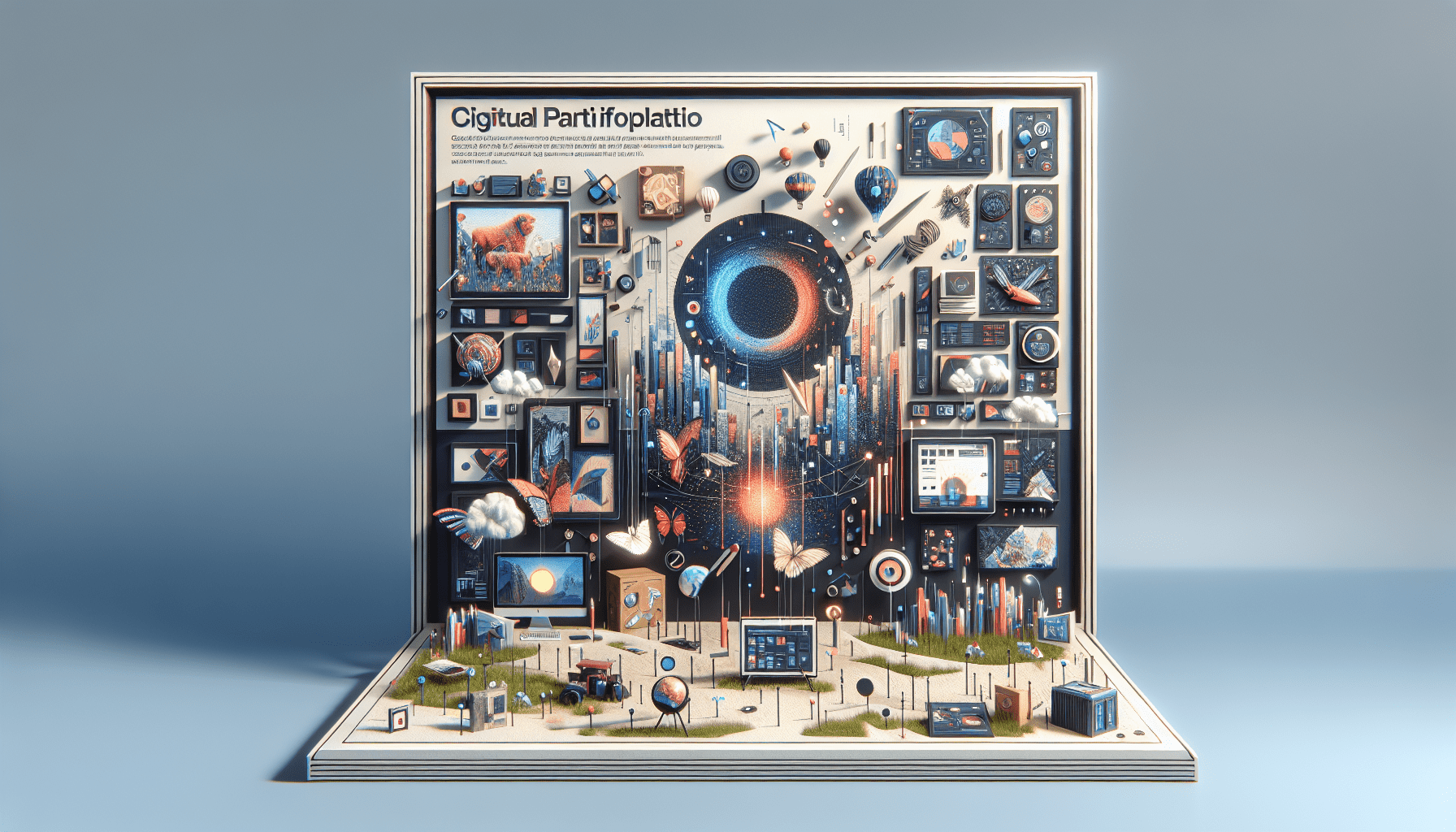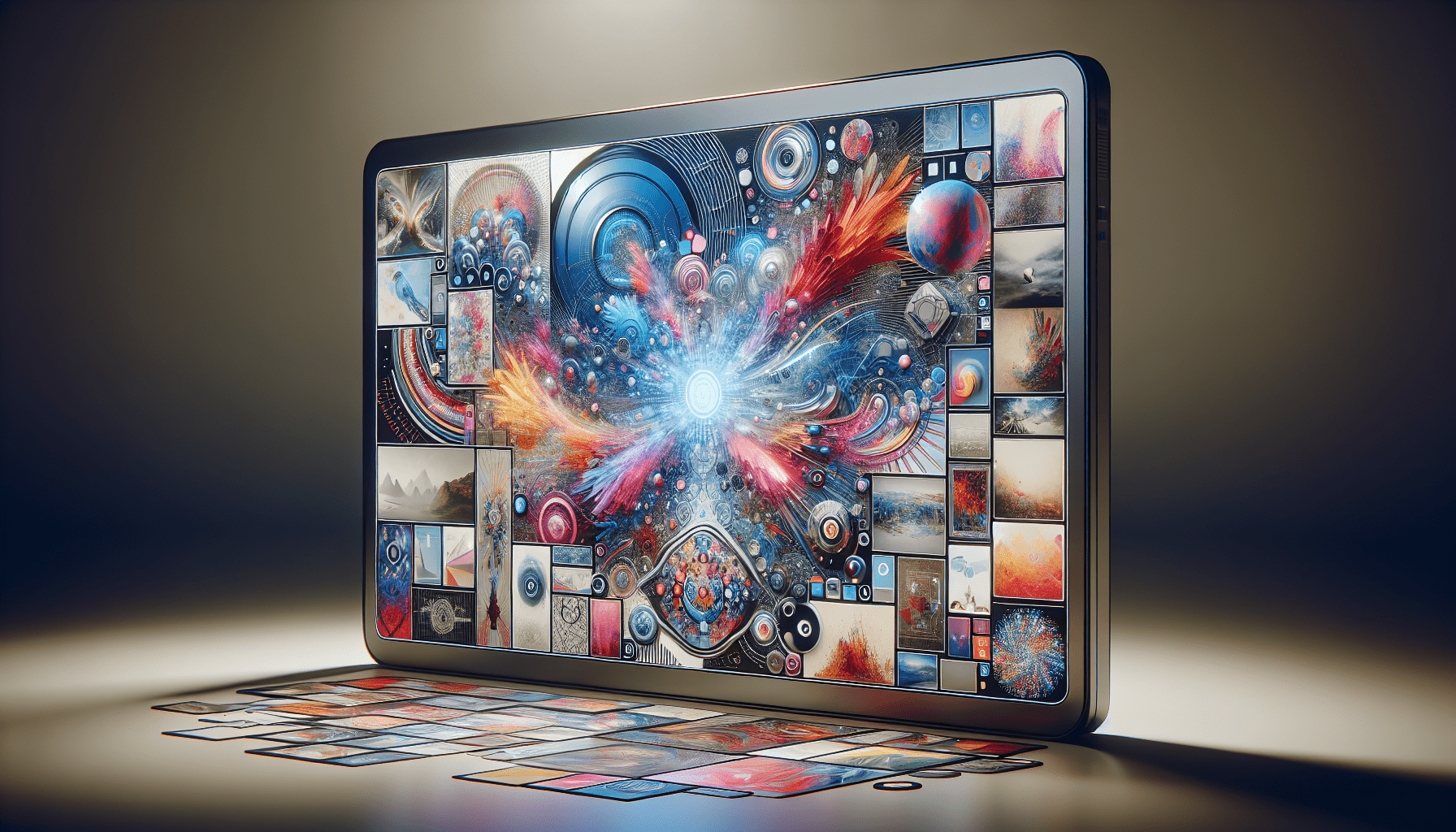Have you ever wondered how a virtual portfolio can elevate your creative presence in the digital space? As the world increasingly shifts towards online interactions, developing a striking virtual portfolio in 3D can set you apart in a competitive job market. It’s not just about showcasing your work but presenting it in a way that’s engaging and memorable.
What is a Virtual Portfolio?
A virtual portfolio serves as a digital repository of your work, showcasing your skills, projects, and creativity. Unlike traditional portfolios, a virtual one offers the flexibility to use multimedia components and interactivity, making your projects come to life in the viewer’s eyes. In essence, it’s a modern approach to presenting your artistic endeavors.
The Evolution of Portfolios
Portfolios have long been crucial for professionals in the creative field. Historically, they were physical collections of work—think binders or beautifully arranged folders filled with drawings, designs, or photographs. However, the advent of technology has transformed this concept. Now, virtual portfolios allow for a broader range of presentation styles, from simple websites to sophisticated 3D environments that can captivate and engage your audience.
Why 3D?
The three-dimensional aspect of virtual portfolios can create a depth of experience that two-dimensional presentations simply can’t match. By incorporating 3D, you can position objects in a space that mimics real life, allowing viewers to interact with your work in a way that feels immersive. This creates a connection that’s both emotional and visual.
The Benefits of a 3D Virtual Portfolio
As you consider creating a 3D virtual portfolio, you’ll find several key advantages that can boost your professional presence and your creative expression.
Enhanced User Engagement
One of the most significant benefits is the increased engagement it fosters. When clients or employers can interact with your portfolio using 3D technology, they are more likely to remember what they’ve seen. Engaging experiences stick with people, promoting better recall of your work.
Showcases Technical Skill
A visually impressive portfolio demonstrates not just your artistic ability but also your technical prowess. Crafting a 3D virtual portfolio requires knowledge of various design programs, adding an extra layer to your professional profile.
Expanded Accessibility
In a world where accessibility is paramount, a virtual 3D portfolio can reach a much larger audience. Individuals can view your work from anywhere globally at any time. No longer are you limited by geographical barriers; your talent can shine on an international stage!
Versatility in Presentation
The versatility of a 3D portfolio means you can showcase a diverse array of projects all in one space. You might display interactive models, animations, and graphics that highlight various aspects of your skills. Each display can present your work in a different, dynamic manner, allowing viewers to appreciate the various facets of your artistry.
Greater Narrative Control
With 3D, you have the opportunity to tell a story with your portfolio. You can guide viewers through your work in a logical or abstract manner, enhancing their understanding of your creative journey. This narrative control adds depth to your presentation that traditional methods cannot offer.

Creating Your 3D Virtual Portfolio
If the idea of a 3D virtual portfolio excites you, the next step is understanding how to create one. While it might seem daunting at first, breaking it down into manageable steps can simplify the process.
Step 1: Define Your Goals
Before jumping in, it’s crucial to clarify what you want to achieve with your portfolio. Are you showcasing your graphic design skills? Seeking new clients for web design? Understanding your goals will help shape your portfolio’s content and design.
Step 2: Choose the Right Platform
When building a 3D virtual portfolio, selecting a suitable platform is vital. Here are a few popular options:
| Platform | Best For | Features |
|---|---|---|
| ArtStation | Artists and graphic designers | High-quality image hosting, community features |
| Sketchfab | 3D model showcasing | Interactive 3D models, VR support |
| Adobe Portfolio | General portfolio creation | Integrates with Creative Cloud, customizable |
| Webflow | Web design and interactivity | Fully customizable sites, responsive design |
Each platform has its unique benefits, so pick one that aligns with your creative style and technical know-how.
Step 3: Curate Your Work
Take the time to select the pieces that best represent your skills and creativity. Quality over quantity is crucial here; a few exceptional works can make a more powerful impact than a larger collection of mediocre ones.
Step 4: Design Your Portfolio
The design of your portfolio should align with your brand and tell a story. Focus on colors, typography, and layouts that reflect your artistic style. Your 3D elements should enhance the experience, not distract from it. When you think about colors, contrast, and usability, you’ll create an environment that is both eye-catching and easy to navigate.
Step 5: Add Interactivity
Interactivity is one of the standout features of a 3D virtual portfolio. Consider including elements like clickable designs, pop-up descriptions, or animations that draw the viewer’s attention as they navigate through.
Step 6: Optimize for Performance
As you integrate 3D elements, make sure to optimize your portfolio for efficient loading times. Large files can slow down the experience, leading to potential viewers bouncing away from your work. Optimize images, use appropriate file formats, and consider a balance between quality and performance.
Step 7: Test and Gather Feedback
After building your portfolio, conduct thorough testing. Ensure that it functions well on various devices—desktops, tablets, and smartphones. Gather feedback from peers to understand how they perceive your work and make adjustments as necessary to improve user experience.
Best Practices for Maintaining Your Virtual Portfolio
Once your 3D portfolio is live, establishing a routine for updates and maintenance is key. Keeping it fresh and relevant can help you remain competitive.
Regular Updates
As you complete new projects or accumulate experience, take the time to update your portfolio regularly. Fresh content not only shows growth but also keeps visitors engaged. Aim to refresh your portfolio every few months, adding new works and removing outdated ones.
Engage on Social Media
By sharing snippets or highlights from your portfolio on social media, you can direct traffic to it. Engage with your audience by asking questions, starting conversations, and creating a community around your artistic brand.
Monitor Analytics
Use tools to track how visitors interact with your portfolio. Which pieces draw the most attention? Where do viewers drop off? Understanding user behavior can help you refine your portfolio further.
Seek Out Opportunities
The digital world is a bustling marketplace filled with opportunities. Leverage your virtual portfolio to network with potential clients, collaborators, or employers. Reach out on platforms like LinkedIn or through creative forums, and let your portfolio speak for itself.

Overcoming Common Challenges
While creating a 3D virtual portfolio can be enormously rewarding, it may not come without its challenges. Here are a few common hurdles and how to tackle them.
Technical Knowledge
If you’re new to design software or 3D modeling, the technical aspects can be daunting. Consider investing time in tutorials or online courses focusing on the platforms you wish to use.
Time Management
Building a portfolio can be time-consuming. Breaking the process down into small tasks and dedicating specific time slots to work on it can help you manage the workload better.
Maintaining Creativity
Sometimes, it can be tough to maintain creativity. To keep the ideas flowing, immerse yourself in other artists’ work, attend galleries, or participate in creative workshops. Surrounding yourself with inspiration can spark the creativity you need for your portfolio.
The Future of Portfolios in the Creative Industry
As technology evolves, so too will the ways in which you present your work. The rise of VR, AR, and other interactive technologies will continue to enhance virtual portfolios, leading to even more immersive experiences.
Embracing Emerging Technologies
Innovations in design and technology present exciting opportunities for creatives. Staying abreast of trends can keep your portfolio relevant. It may also open doors to new collaboration possibilities as the creative landscape matures and more artists embrace these technologies.
Conclusion
In conclusion, when you reflect on the benefits of a 3D virtual portfolio, it’s clear that this modern approach not only showcases your work effectively but also elevates your professional presence in an increasingly digital world. You have the chance to engage viewers, demonstrate your technical skills, and share your story—all in a compelling interactive format.
Whether you’re a graphic designer, web designer, or involved in social media marketing, building a 3D virtual portfolio can immensely boost your visibility and attract attention to your work. Remember, it’s all about presenting your best self in an engaging way. So go ahead, embrace the digital frontier, and let your creativity shine through your unique 3D portfolio!

